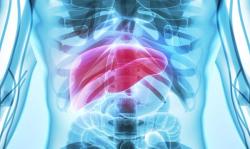
OR WAIT null SECS
Electroacupuncture Effectively Treats Gouty Arthritis
Electroacupuncture demonstrates superior analgesic effects and the ability to lower serum uric acid in patients with acute gouty arthritis when compared to conventional medication options.
A meta-analysis of 15 randomized controlled trials (RCTs) demonstrated electroacupuncture successfully treated patients with acute gouty arthritis, according to a study published in Frontiers in Immunology.1 Additionally, the combination of electroacupuncture with conventional medicine was shown to be more effective in reducing pain and uric acid levels when compared with traditional drug treatments alone.
Currently, therapy protocols for the treatment and management of acute gout attacks include nonsteroidal anti-inflammatory drugs (NSAIDs), corticosteroids, and colchicine. However, these options may take several days to fully work and are associated with contraindications and adverse events, which emphasize the need for more effective, safer treatments.2
“The involvement of electroacupuncture in managing various types of pain is gaining popularity, and there is a need to understand its potential use in managing inflammatory pain better,” wrote a group of investigators from Chengdu University of Traditional Chinese Medicine, China, and West China Second University Hospital, Sichuan University, China.
A systematic review determined the safety and efficacy of electroacupuncture, a non-pharmacologic therapy, for the treatment of acute gouty arthritis using relevant studies found in 8 Chinese and English databases from inception to July 30, 2023.
A total of 242 studies were identified, of which 15 RCTs, comprised of a total of 1076 patients, were included in the meta-analysis. The results of the analysis included data on efficacy rate, serum uric acid level, visual rating scale (VAS) for pain, the immediate analgesic effect, and the incidence of any adverse events.
For the treatment of acute gouty arthritis, electroacupuncture was significantly different from conventional medication options (relative risk [RR]: 1.14, 95% confidence interval [CI] = 1.10 - 1.19, P < .00001) and demonstrated superior analgesic effect when compared with Western drug treatment (mean deviation [MD] = -2.26, 95% CI = -2.71 - -1.81, P < .00001). Further, combining electroacupuncture with Western treatment resulted in better immediate analgesic effects (MD = -1.85, CI -2.65 - -1.05, P < .00001). Patients receiving the electroacupuncture intervention were also able to achieve lower serum uric acid when compared with Western treatment (MD =-31.60, CI -44.24 - -18.96], P < .00001).
Of the 5 studies reporting adverse events, 19 cases of gastrointestinal symptoms and 6 cases of neurological symptoms were observed (RR = .20, 95% CI = .04 to .88, P = .03).
Investigators noted limitations such as the lack of multicenter trials among the RCTs and including only RCTs performed in China, which may have impacted the quality of findings. Additionally, publication bias may have hindered findings due to trial design and outcome evaluation.
The efficacy of electroacupuncture was potentially influenced by bias as there were difficulties in blinding and the development of specifications regarding the acupoint selection and stimulation intensity of the intervention was challenging. However, based on these findings, investigators recommend electroacupuncture therapy with Sanyinjiao and Zusanli as the main acupoints when treating patients with acute gouty arthritis with stimulation of the Ashi point for a 30-minute timeframe.
They urge future studies to include multicenter trials involving of larger sample sizes and longer treatment periods to confirm these findings.
“These findings will offer clinicians more treatment options to consider,” investigators concluded. “Furthermore, we recommend that patients consider electroacupuncture as a treatment for AGA due to the positive outcomes observed in the analyzed data. At the same time, alternative options might have shown comparatively weaker results.”
References
- Ni Z, Xiao Q, Xia Z, Kuang K, Yin B, Peng D. Electroacupuncture for acute gouty arthritis: a systematic review and meta-analysis of randomized controlled trials. Front Immunol. 2024;14:1295154. Published 2024 Jan 4. doi:10.3389/fimmu.2023.1295154
- Keenan RT, O’Brien WR, Lee KH, Crittenden DB, Fisher MC, Goldfarb DS, et al. Prevalence of contraindications and prescription of pharmacologic therapies for gout. Am J Med (2011) 124(2):155–63. doi: 10.1016/j.amjmed.2010.09.012


